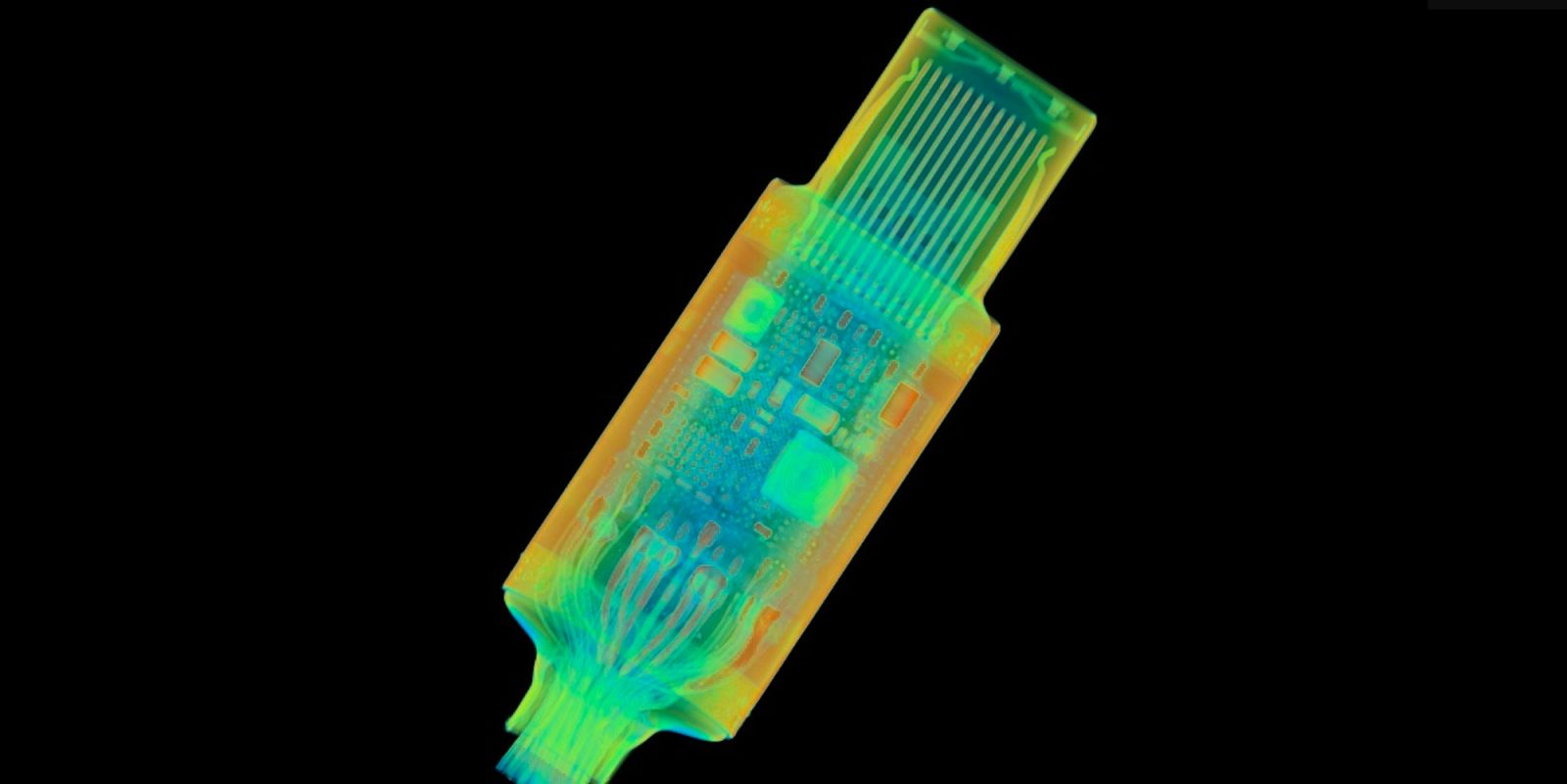
Apple’s “Thunderbolt 4 Pro” cable is regularly mocked for its $129 price point, but there’s actually an impressive amount of technology packed inside. A teardown last year offered a closer look at what’s inside the cable, and new CT imagery from the folks at Lumafield gives us another look and some comparisons to cheaper cables on the market.
I’ll refer you to the Lumafield website for the full details on what this CT scan revealed about Apple’s Thunderbolt 4 Pro cables. Needless to say, however, the results are pretty impressive. Apple even made sure to use stainless steel throughout:
The connector has a hard plastic enclosure; beneath it is a metal shield that’s fully bonded to the shell of the connector — all made of stainless steel. Where the cord leaves the connector, we find a single-piece strain relief crimped in from eight different directions that shields the entire bottom of the assembly.
The Thunderbolt cable contains three distinct types of wires corresponding to its separate charging and data transfer capabilities. The coaxially shielded conductors in the cable are high-speed data lines. Most of the unshielded wires transmit power, but two of them are data wires that support legacy USB 2.0 functionality. The wires and their shields are landed separately on the PCBA.

Apple’s Thunderbolt 4 Pro cable packs all of the bells and whistles, including up to 40 Gb/s data speeds, 100 W power delivery, DisplayPort video output (HBR3), and more. “Overall, the Thunderbolt cable is a stunning piece of precision engineering,” Lumafield says.
Whether or not all of this is enough to justify the $129 price tag of the Thunderbolt 4 Pro cable is for you to decide. And chances are, most of you don’t need all of the power and throughput provided by it. Still, it’s clearly a well-designed and powerful option to have on the market.
View the full breakdown of the Thunderbolt 4 Pro cable on the Lumafield website, plus comparisons to cheaper alternatives on the market.
Follow Chance: Threads, Twitter, Instagram, and Mastodon.
FTC: We use income earning auto affiliate links. More.




Comments